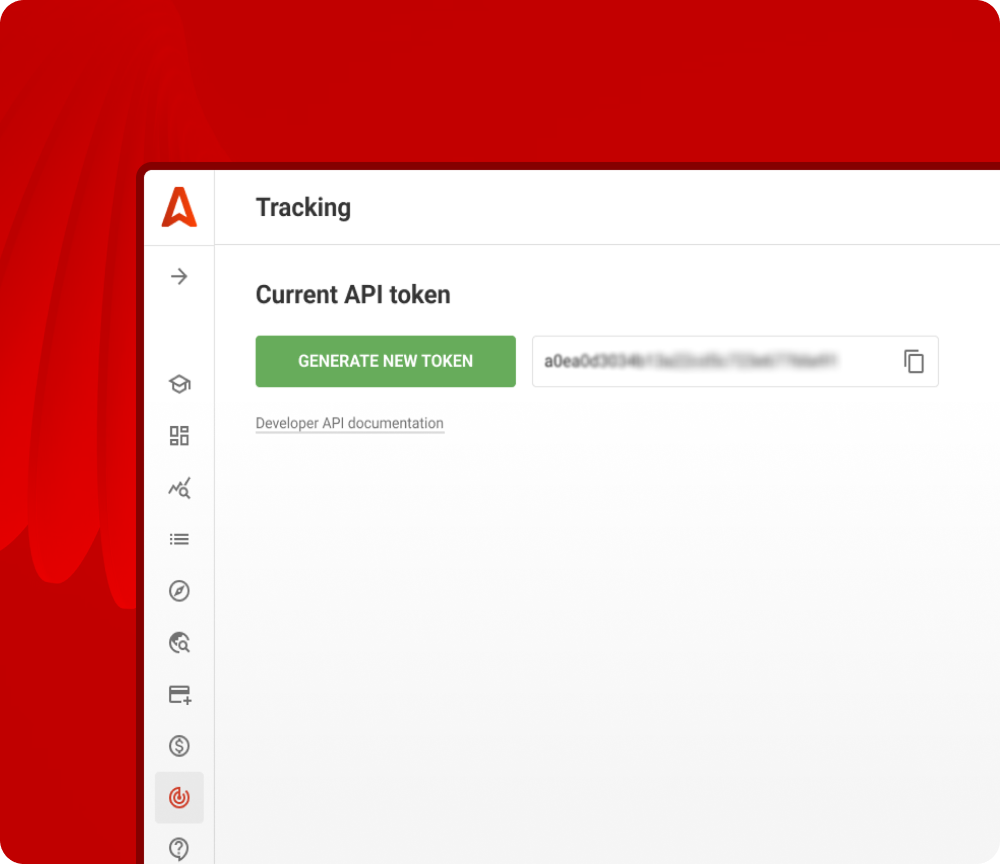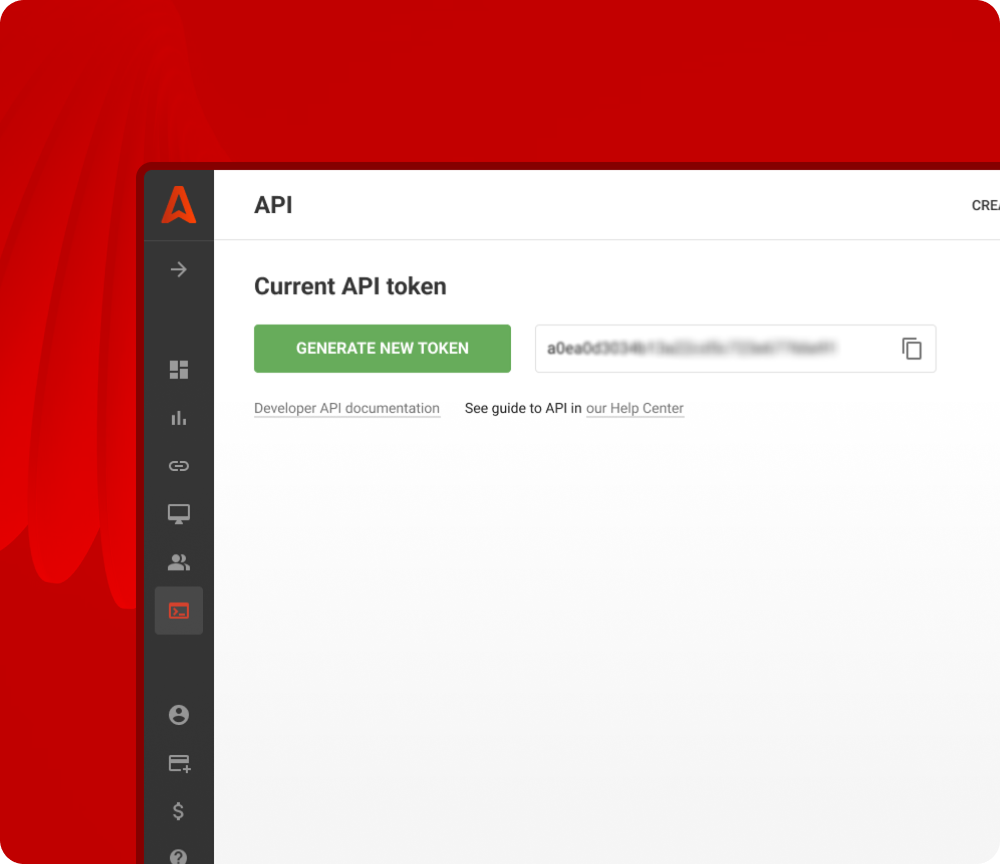With ad network's API, advertisers and publishers manage core assets seamlessly while updating vital performance parameters. Monitor your stats from a single touchpoint, optimizing your ad or monetization strategy.

Types of API Adsterra provides



Automate campaign management and bidding while ramping up performance monitoring

Unlock additional revenue streams through detailed insights into your traffic sources
How can advertisers and publishers
use
the integration?
Get access to campaign performance through your software, automate bid updates, and make decisions faster.
- Retrieve and analyze core stats: spending, CPM, conversions, clicks, etc.
- Create and configure Popunder CPM campaigns with both basic and advanced targeting settings.
- Optimize bids, targets, and limits efficiently without leaving your current interface.
- Manage placement blacklisting and whitelisting.
- Easily compare traffic sources' performance across several ad networks.
Enhance your monetization strategy by controlling ad placements and getting core stats reports in time. Save time on monitoring vital metrics:
- Websites you added, including their names and unique IDs.
- Ad placements on each of your domains.
- The list of placements you have across all websites.
- Full reports: impressions, clicks, CTR, CPM, and revenue.
- Best-performing countries.
How to get the API token


What are the benefits of using API?





Streamline your processes by tracking the efficiency of your ad inventory in one place.

Eliminate advertising discrepancies. When you have all critical data in front of you, you can react faster.

Get important reports from your platform in a convenient format without entering your Adsterra account and downloading the files manually.

Maximize the efficiency by monitoring your ad or monetization inventory performance across multiple platforms.
Network’s API FAQs
- A: Integrating any third-party platform with the advertising network's API enables you to pull data from the network into your platform. Advertisers and publishers generate tokens to collect all the necessary statistics in their tracking systems. With Adsterra, advertisers can also manage current campaigns, updating bids and vital targeting settings.
Q: How to use Adsterra ad network API in affiliate marketing?
A: Affiliate marketing teams utilize such integrations to streamline their daily routines. Running campaigns with several ad networks requires switching between multiple accounts. This is a heavily time-consuming activity, especially when they have to report to several advertisers and download CSV files. API for affiliates troubleshoots this issue. Marketers access all statistics in one interface, optimized by format and KPIs, tailored to their needs.Q: Which HTTP request methods do you support?
A: As an advertiser, you can use GET, POST, and PATCH methods depending on the type of data you want to process. For example, you can use the PATCH method to update your campaigns’ statuses or POST method to add campaign-placement pairs to linking blacklists. As a publisher, you can only operate with the GET method for now.Q: Which data formats are supported?
A: You can choose between JSON, XML, and CSV formats. We send data in JSON format by default.Q: Where can I find Adsterra API documentation?
A: Adsterra documentation for advertisers and publishers is available to the public. Our partners can find the main methods, variables to pass and pull data, and the structure of the data we return. You can also find examples of queries there.




💡 Save time on generating multiple SmartLinks: A placement_sub_id parameter will make one URL unique and easy to track.